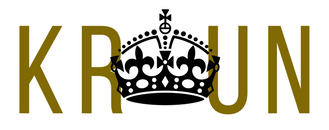Equity
In October of 2016, we shared the differences between inequality and inequity to delineate the ideas from each other for the proper use of each word in their appropriate context. However, they’re still being used interchangeably – and it’s understandable. Often, professionals who have been working in the field of public health for decades mix up the two. It’s understandable that general lay audiences mix them up as well.
So, let me ask you a question that may help spell out equity for you.
Imagine I walk up to you in a crowded restaurant and tell you that I’m buying you a pair of tennis shoes. Would you be excited? Would you be nervous? Would you be thinking “who the f*ck are you?!” Let’s say you’re excited. And then I tell you that those shoes must be a size 13, narrow width in men’s shoes. You then raise an eyebrow and say you don’t wear a size 13 in men’s shoes, and that your feet aren’t narrow. Then I tell you that they’re blue, your favorite color. “But blue is not my favorite color “, you reply. I then get angry and yell, “Listen, everyone eating in this restaurant today during lunch is getting these same pair of shoes in the same size and color. Don’t you need a pair of tennis shoes? Why aren’t you more grateful?” You respond, “Thank you for the pair of shoes, but I won’t even be able to use them. They would be way too long and narrow. Plus, I hate blue.” “My shoe size is 8.5, wide women’s and my favorite color is yellow.”
You see what I did there? I assumed that everyone in that restaurant needed the same pair of shoes. Same, size, style, width, and color. That is equality. Giving everyone the same thing without allowing them access to make the choices that are best for them.
Equity, then, is not giving everyone with the same pair of shoes. It is giving everyone access to the pair of shoes that fits them and their specific needs at any given time for any given situation. A deeper understanding of equity, then, lends that your shoe needs may change over time and according to the situation. You may need a heel for work, running shoes for your marathon, or trainers for weight lifting.
Often, in healthcare and public health, we continue to generalize about the population’s needs based on the research and study of a specific sector of the population. Thus, we assume that giving everyone the same thing – the same treatments, the same screening modalities, the same therapies – is appropriate. This is not appropriate. Not appropriate at all. Healthcare must be tailored. Public health must be tailored. As a refresher, health equity is, in fact, providing everyone the opportunity to obtain their highest level of health; giving everyone access to the healthcare system and to improve their social determinants of health in a way that is suitable and customized to their specific needs. It can also be described as mitigating or eliminating avoidable and, often, unfair and adverse health outcomes (health disparities) among population groups.
Now that we know the difference, how do we make the shift from advancing health equality to improving health equity?
First, our systems and institutions must acknowledge that they are built on racism and continue to perpetuate racist ideologies and practices that harm the people they serve. Then, we LISTEN TO PUBLIC HEALTH PROFESSIONALS! That’s right. The people who are experts in determining how the social determinants of health intersect with the very identities of individuals and how those intersections affect their treatment within the systems they navigate and seek care within. We collect data and incorporate equity building practices from the onset of that data collection and then we use the data to reform systems or build new ones that are equitable for all.
This will take some time, work, and resources. But the next generation needs us to do this. Or else we’ll be spinning our wheels thinking everyone needs the same pair of shoes forever.
